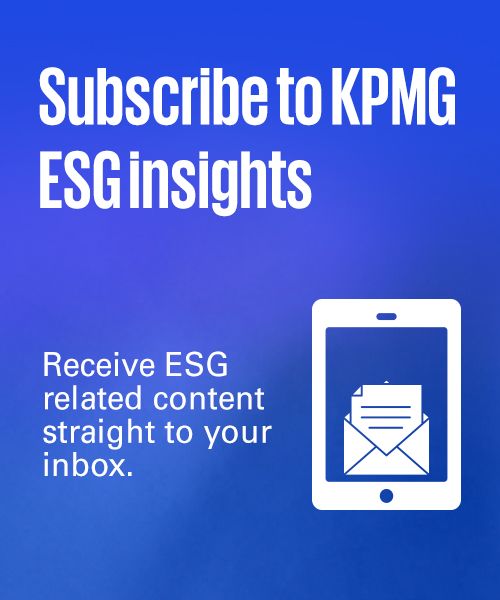What information will you need to report and how?
What’s the issue?
The European Sustainability Reporting Standards (ESRSs) require the disclosure of comprehensive information on a company’s performance regarding sustainability topics and how they are managed. For years beginning on or after 1 January 2024, certain companies will need to apply ESRSs. This means that these companies would need to disclose information for topics covered by cross-cutting, topical and sector-specific standards, as shown in the diagram below.

Companies would need to provide information under four reporting areas: governance, strategy, impact, risk and opportunity management, and metrics and targets. Companies would also need to disclose their approach and measures for addressing company-specific sustainability topics. This information would need to be included in a clearly identified single section of the management report and referred to as ‘sustainability statements’.
Under ESRSs, companies would need to disclose comprehensive, material 1 sustainability-related information. They would include this information in a separately identifiable section of their management report.
Getting into more detail
When presenting information in sustainability reports, companies would need to ensure that the information meets the following characteristics set out in ESRS 1.
Relevant |
Sustainability information is relevant when it may influence a user’s decision under a double materiality approach. Under ESRSs, information may influence a user’s decision if it has predictive or confirmatory value, or both. This would need to be considered regardless of whether the information was already known through another source, or if the user chooses not to consider this particular disclosure. Predictive value refers to information that may be used to predict future information about the company; confirmatory value refers to information that results in the confirmation of, or a change in, a user’s previous evaluations. |
Faithful representation |
Information meets the faithful representation criterion if it is:
|
Comparable |
Information is comparable when it can be compared to information disclosed both by the company in previous periods and with information disclosed by other companies engaged in similar activities or industries. |
Verifiable |
Information is verifiable if various independent and knowledgeable observers can reach a consensus that it is represented faithfully. |
Understandable |
Sustainability information needs to be clear and concise. Typically, this means that it relates only to the company and avoids disclosures that are already included elsewhere in the management report. |
How would companies present their sustainability reports?
Under ESRS 1, sustainability information would be included in a clearly identified single section of the management report and referred to as ‘sustainability statements’.
Any other information that a company includes in its sustainability statements is presented separately and distinctly. If a company includes information that is based on other legislation or guidance, then it would need to clarify that this information refers to other requirements and provide a suitable reference.
Sustainability statements would need to be presented in a specific order – i.e. general information, environmental, social and governance information – as set out in the diagram.
To avoid duplication of information between the sustainability statements and other reports that contain sustainability information, cross-referencing 2 is permitted to:
- another section of the management report;
- the financial statements;
- the corporate governance report;
- the remuneration report; and
- public disclosures under regulation 575/2023 (Banks’ Pillar 3 disclosures).

When referring to another report, a company would need to ensure that it does not compromise understandability and that the report it refers to meets the following requirements.
- The information referred to is distinct from information already provided and can be clearly identified as addressing the relevant disclosure requirement.
- The report is released at the same time as or before the management report containing the sustainability statements.
- The report is subject to the same or a higher degree of assurance as the sustainability statements.
- The report’s technical requirements for digitalisation are the same as those for the sustainability statements (see next section on reporting format).
What format would a company use when presenting sustainability information?
Under ESRS 1, a company would also need to disclose its sustainability information in a format that is machine-readable. This means that humans as well as computer-based systems can access and understand the information.
Companies will be required to create their reports using the European Single Electronic Format (ESEF) and, therefore, will need to provide for electronic identification of certain information in compliance with ESEF regulation.
Actions for management
- Educate your organization on the new disclosure requirements under the draft ESRSs.
- Engage with current process owners to understand how information is collected and understand where there are data and control gaps.
- Expand your system processes and controls to identify and capture the significant amount of data required to meet the disclosure requirements.
Related content
Contact Us
1 Double materiality requires companies to approach their materiality analysis from two separate perspectives: 'impact materiality' considers the sustainability matters that relate to a company's actual or potential impacts on people or the environment; 'financial materiality' considers information that would influence an investors' decisions. Information is material to report if it meets the criteria of either perspective, or both.
2 Cross-referencing is a term used in ESRS 1 for incorporation by reference.










